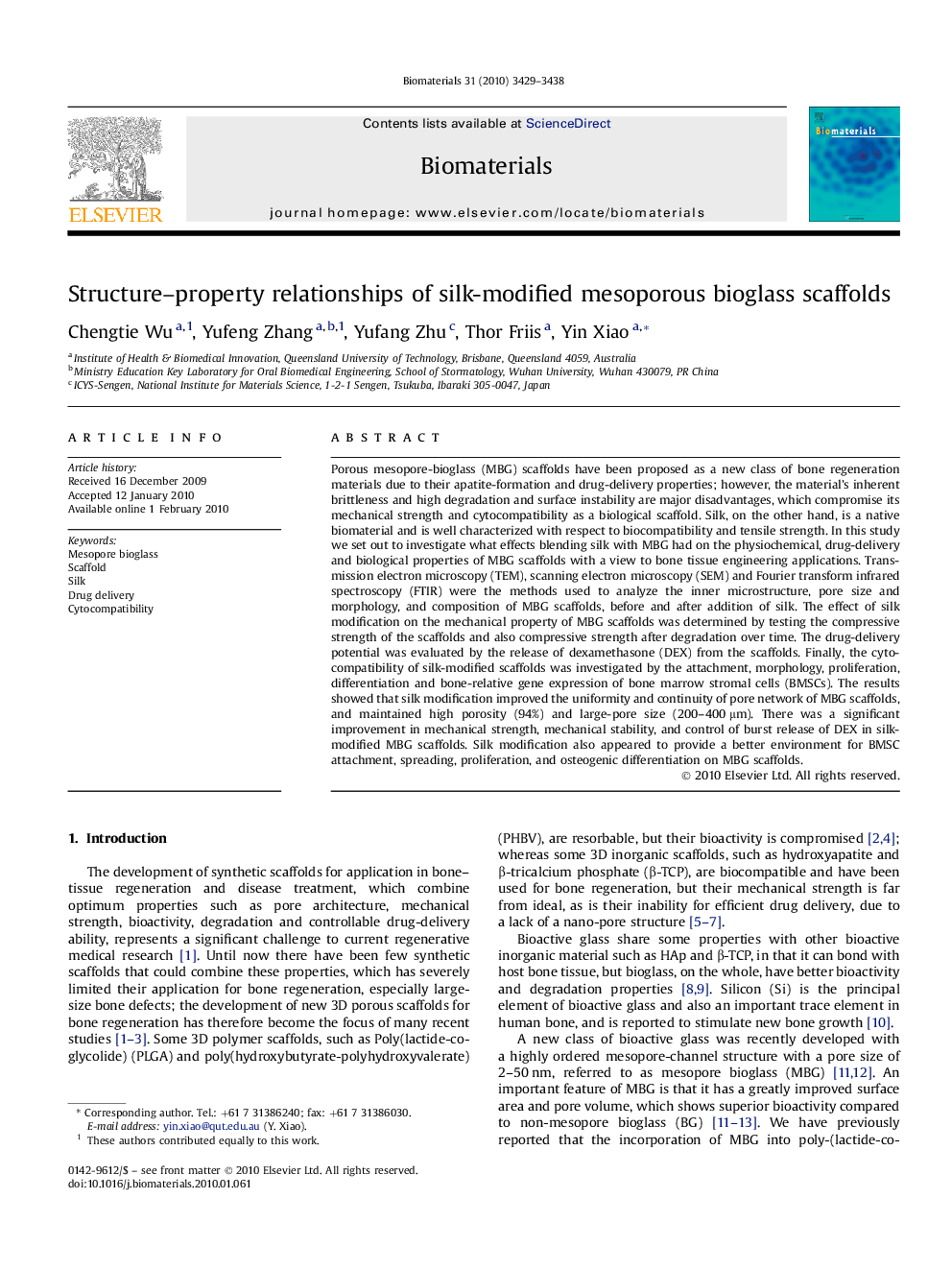| کد مقاله | کد نشریه | سال انتشار | مقاله انگلیسی | نسخه تمام متن |
|---|---|---|---|---|
| 9694 | 643 | 2010 | 10 صفحه PDF | دانلود رایگان |

Porous mesopore-bioglass (MBG) scaffolds have been proposed as a new class of bone regeneration materials due to their apatite-formation and drug-delivery properties; however, the material's inherent brittleness and high degradation and surface instability are major disadvantages, which compromise its mechanical strength and cytocompatibility as a biological scaffold. Silk, on the other hand, is a native biomaterial and is well characterized with respect to biocompatibility and tensile strength. In this study we set out to investigate what effects blending silk with MBG had on the physiochemical, drug-delivery and biological properties of MBG scaffolds with a view to bone tissue engineering applications. Transmission electron microscopy (TEM), scanning electron microscopy (SEM) and Fourier transform infrared spectroscopy (FTIR) were the methods used to analyze the inner microstructure, pore size and morphology, and composition of MBG scaffolds, before and after addition of silk. The effect of silk modification on the mechanical property of MBG scaffolds was determined by testing the compressive strength of the scaffolds and also compressive strength after degradation over time. The drug-delivery potential was evaluated by the release of dexamethasone (DEX) from the scaffolds. Finally, the cytocompatibility of silk-modified scaffolds was investigated by the attachment, morphology, proliferation, differentiation and bone-relative gene expression of bone marrow stromal cells (BMSCs). The results showed that silk modification improved the uniformity and continuity of pore network of MBG scaffolds, and maintained high porosity (94%) and large-pore size (200–400 μm). There was a significant improvement in mechanical strength, mechanical stability, and control of burst release of DEX in silk-modified MBG scaffolds. Silk modification also appeared to provide a better environment for BMSC attachment, spreading, proliferation, and osteogenic differentiation on MBG scaffolds.
Journal: Biomaterials - Volume 31, Issue 13, May 2010, Pages 3429–3438